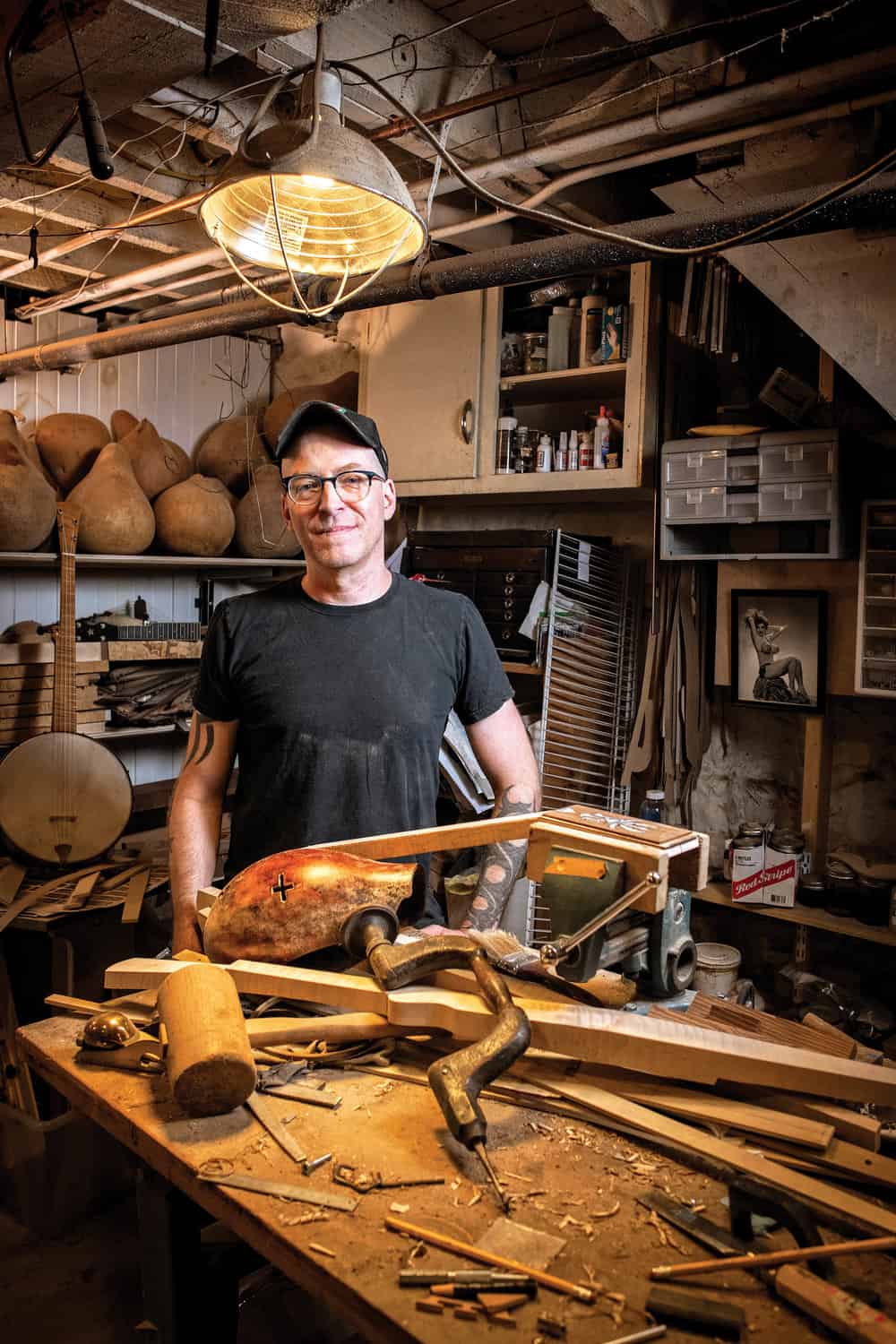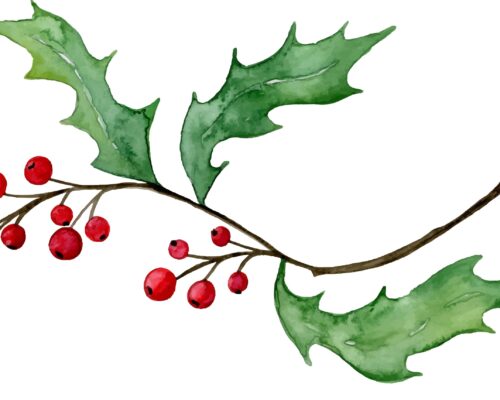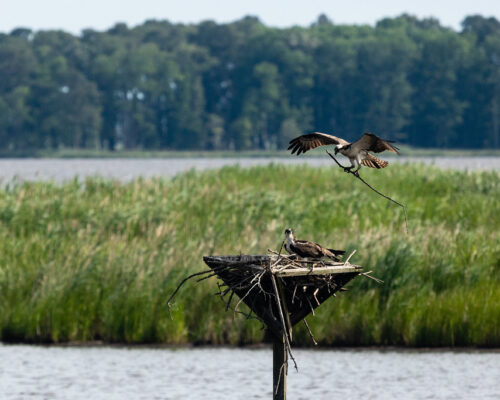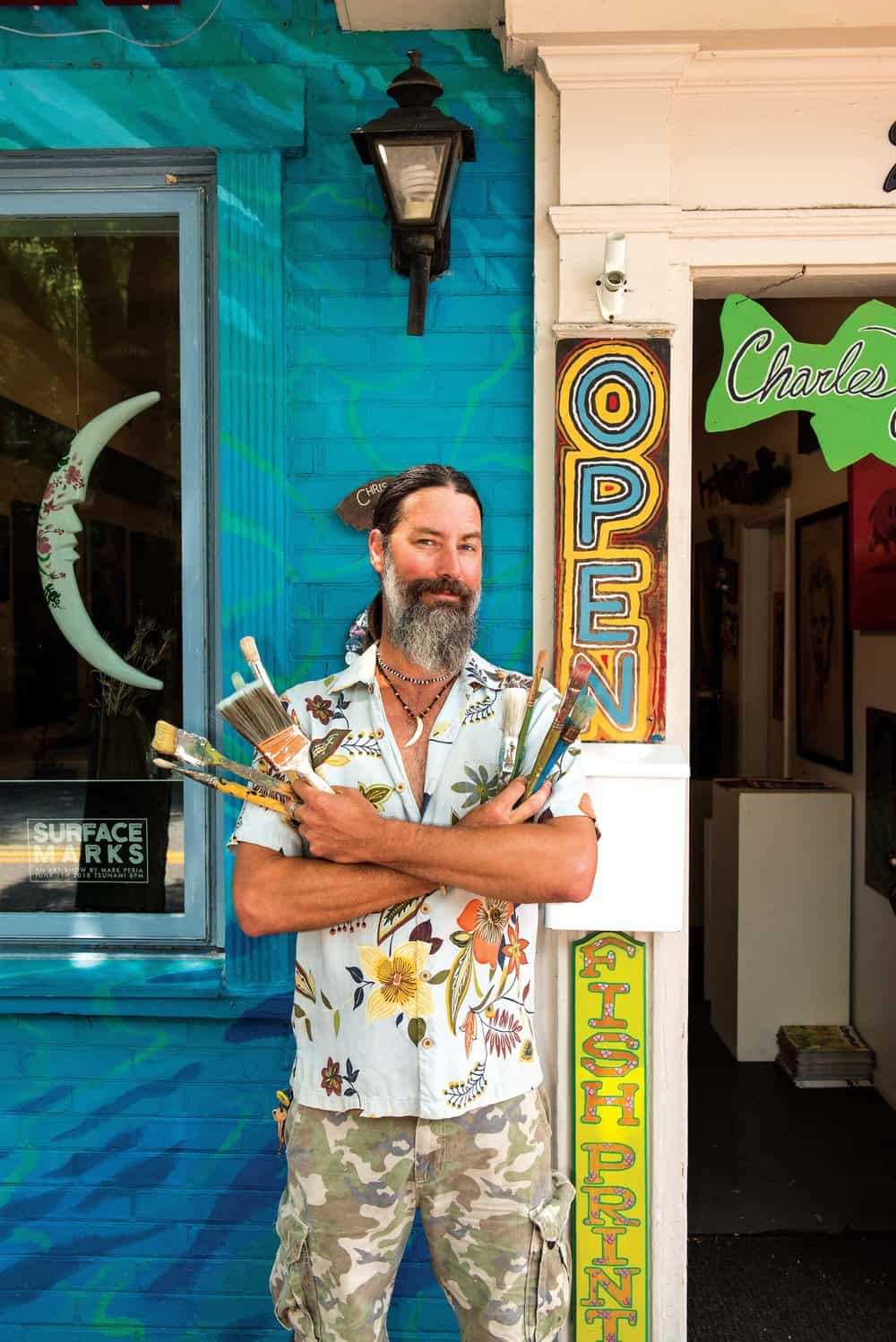Digging up the roots of American music with Banjo Pete
Pete Ross, a.k.a. “Banjo Pete,” stands just inside the front door of his modest, 1920s Baltimore rowhouse a few blocks from the site of the old Memorial Stadium, wearing a baseball cap, t-shirt and jeans, his typical work attire. No banjos appear—yet. “So, what do you want to see?” he says, friendly as can be.
A short, wooden staircase takes us to a relatively small unfinished basement, his workshop. And here is the clear evidence of Ross’ life’s work, the reason for his nickname. Each year, amid workbenches, hand tools, he and his girlfriend’s cats’ litter box and the sawdust, Ross hand-builds dozens of historically accurate banjos—small, spherical bodies with long necks and four or five strings running the length—which he describes as one of the most underappreciated and misinterpreted items of Chesapeake and American history. For most listeners, the banjo is known for producing the theme song to the movie Deliverance or as a symbol of American hillbilly country music, or even that thing comedian Steve Martin plays for a hobby. That’s what popular culture may tell us about it—just du-du-du-du, du-du… du-du, du…but there’s much more to the banjo’s centuries-old history than that.
“It’s a great vehicle to travel through parts of American history that are more important than the instrument itself,” Ross says, standing next to a rack of several long 1890s-style wooden necks, which he’s carefully inlaid with mother-of-pearl.
The banjo’s origins point to Africa, though other regional cultures have been credited by some with its development. Nevertheless, it’s considered by music historians as our only indigenous American instrument. Ross describes the banjo as “American as America itself—the product of our incredible mix of cultures.” Its metallic sounds—nowadays the frenetic plucking of bronze and steel strings resonating against a taut plastic drum-head—may not immediately conjur the time of slavery in America and the Caribbean, but that’s the path the instrument traveled. Ross’ replication of earlier incarnations of the banjo, with fretless wooden necks, gut strings, and gourd bodies covered by animal skins, are artifacts of human history. And the banjo, for better or worse, is a central figure in the foundation of the American culture, with the Chesapeake Bay region playing an essential role.
Ross reveals himself as an anthropologist and historian as he guides me around his cluttered workshop, which has shaved strips of maple here, more than a dozen thick-skinned Pennsylvania Amish gourds (think the squash or pumpkin family) drying out over there, and banjos in various stages of completion.

The son of teachers, Ross, 49, came of age in the 1980s in Wheaton, Maryland near Washington, a city prominent in the underground punk-music scene. “I’d always rejected corporate marketing, resisted the commercialized culture,” Ross says.
In a narrative out of the movie High Fidelity, he was playing guitar in 1989 in a band and working in Joe’s Record Paradise, an independent store, when he grabbed a misfiled platter, Altamont: Black Stringband Music from the Library of Congress, from a bin marked “blues,” and decided to play the Tennessee-based music for customers. Then, he kept playing it for himself. This wasn’t the subterranean old-time folk music played by white revivalists that he thought he knew. “Right away it put off my notions of who this music was performed by,” Ross says. “I thought it was the whitest music ever and here were these black guys making really compelling music with it. The curiosity set in, and I started exploring the history of it.”
He found a book, Sinful Tunes and Spirituals: Black Folk Music to the Civil War, by Dena Epstein, which chronicles the early history of the slave era music. He read about 19th-century minstrel show music performed by blacks, but most often by whites in blackface—“as hateful a cultural expression as it was,” Ross says —in which the banjo was the key instrument. The shows were the first pop-music form that made the vernacular music of African Americans audible to white ears and served as an origin point for important musical movements like ragtime, jazz, blues, and bluegrass. He learned that Thomas Jefferson wrote about enslaved African Americans playing the banjo in his 1781 Notes on the State of Virginia. “The instrument proper to them is the Banjar, which they brought hither from Africa,” wrote Jefferson. Ross discovered the history of tobacco plantations, one of the first enterprises to use African slaves in North America, and which were a dominant agricultural feature around the Chesapeake due to the climate and the transportation convenience the Bay provided.
This is supported by statistics shared by historian Bob Winans in his recently published book, Banjo Roots and Branches. Ross wrote an essay for it, about the subject of one of his recreations, the Hatian banza. In the book, Winans finds that more than half of the documented references to the banjo between 1736 and 1840 were in the Chesapeake Bay region with the rest loosely scattered throughout America, except for clusters in New York City and New Orleans. Evidence of early banjos were found in Kent, Prince George’s, Dorchester, Talbot, Baltimore, and St. Mary’s counties in Maryland and Suffolk County in Virginia. Ross says, “I just want a time machine real bad.”

According to Ross, the further back in time you go, the more concentrated is the banjo data in our area, and the clearer the story becomes. Of the 43 data points collected from 1736-99, 59 percent are located in Virginia, Maryland and Delaware. There’s a 1748 description of a slave named Toby, who fled Kent County and “took with him…a new fiddle [and] a bonja.”
According to Winans, the earliest documented use of the modern spelling “banjo” is found in a 1749 advertisement in the Pennsylvania Gazette that sought the return of a runaway slave, Scipio, “who plays on the banjo and can sing,” to Captain Thomas Prather of Prince George’s County. Meanwhile, there are only four documented cases of white people playing the banjo before 1840, and three were associated with blackface minstrelsy, according to Ross.
Ross attended the School of Visual Arts in New York in the early 1990s, and decided to make the banjo his thesis project, though his teachers advised him to do otherwise. But he forged ahead, compelled by the fact that he couldn’t find any physical evidence of the instrument anywhere, a sort of social injustice in his view. “It blew my mind that there weren’t any of them around that I could find, that no one had saved one,” he says.
He bought his first gourd at a fall market in New York’s East Village. “I didn’t know what it was, really,” he says.
After college, Ross apprenticed under Scott Didlake, a Mississippian who, until his death in 1994, was considered the go-to maker of gourd banjos. Since then, during his self-taught journey to unearth the buried history of the African American instrument, Ross has built hundreds of gourd banjos and more-recent five-string instruments inspired by 19th century versions.
Ross is “probably the best-known and highest-quality gourd banjo-maker in the business,” longtime Banjo Newsletter columnist, historian and performer Bob Carlin writes in his 2016 book, Banjo: An Illustrated History. Ross’ meticulous attention to detail and authentic sourcing means it takes him months to finish a project. He sells most for under $1,000, but some go for more. His recreations are part of museum exhibits as far away as Paris and Brussels and as close as Colonial Williamsburg and Baltimore, which, in another key plot point in the instrument’s history, was also the home of the earliest-known commercially produced banjos, built in the 1840s by German immigrant William Boucher. At that time, Baltimore was home to the largest free black community in the nation. Boucher also made drums and bent-wood, drum-like, rimmed banjos with adjustable skin heads, innovations that replaced the gourd-body concept and allowed for mass production, which set the course for the banjo’s commercial future. Though he had several locations, Boucher’s last was in the Baltimore’s theatre district where minstrel shows were popular. That plot of land on Baltimore Street, or “The Block,” now features the Two O’Clock Club, a strip club formerly owned by burlesque performer Blaze Starr.

A late-18th century watercolor titled The Old Plantation, credited to John Rose, a South Carolina plantation owner, depicts a group of African American slaves in the foreground dancing outside two small buildings. A homestead is shown in the background across a large, grassy field. One man plays a four-string banjo, with several sound hole crosses and a single flower spot carved into the gourd body. Two women dance with cloth in their hands and another man holds a stick. It’s the inspiration for Ross’ Old Plantation Banjo, which he’s recreated many times. The neck is sometimes made of maple, but usually cypress, with three long strings and one short thumb string connecting over a bridge to a leather tailpiece on the bottom of a gourd.
Jefferson wrote about the banjo as a four-string instrument. The “banza,” discovered in Haiti, has that structure too. Ross included that recreation in an exhibit, “Making Music: The Banjo in Baltimore and Beyond,” that he, Winans and Greg Adams (a Smithsonian archivist and minstrel banjo historian) curated in 2014 at the Baltimore Museum of Industry.
The first documentation of the banjo in the New World came in 1707 from an Irishman, Sir Hans Sloane, in Jamaica. He wrote of an “imitation of Lutes, made of small Gourds fitted with Necks, strung with Horse hairs.”
There are also Creole references to the “banja,” and there is a long history of banjo-like instruments in the former Dutch colony of Suriname on the northeastern coast of South America. A 1770s banjo was collected from Suriname and put on exhibit at MIT in the early 2000s. Ross examined it.
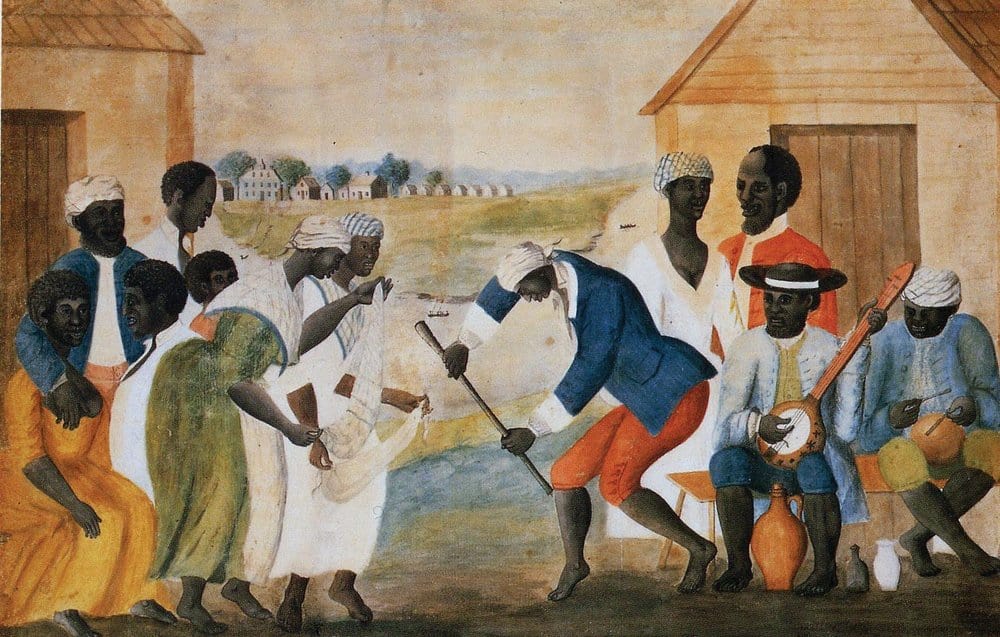
Ross isn’t the only one in his house pursuing this largely untold part of Chesapeake and American history. Ross’ girlfriend, Kristina Gaddy, a writer, historian, and fiddle-player whom Ross met at a folk festival in West Virginia, is too. In June, using the banjo as part of the evidence, she and Ross traveled to Suriname where she presented a paper at a conference on the legacy of slavery. The paper details in part the commonality of a Surinamese ritual dance called the “banya,” which acknowledges life and death. Still practiced today, dancers use cloth scarves pulled tight between two hands, just like those in The Old Plantation painting. “The banya is a ritual that combines song, dance, and role-playing in a religious ceremony to establish spiritual contact with ancestors and gods,” Gaddy writes. The banjo is a part of it.
The Haitan banza was collected in 1841 but had gone unnoticed in Paris’ Musee de la Musique until 2003. Like Ross’ Old Plantation Banjo, it had three long strings and one short “thumb” string and included cross-shaped sound holes that, “likely symbolize the intersection of the earthly plane and the spiritual plane,” according to Laurent Dubois’ 2016 book, The Banjo: America’s African Instrument. Ross reproduced it, copying every stray tool mark, and every stain or scratch, he says, including a leather thong “nut,” down to the finest measurements he gathered on a trip to Paris to examine the specimen. “The early banjo in the Americas was a conjuring device,”
he says.
Sitting on a small, wicker loveseat on his front porch, rain coming down outside on an early summer evening, Ross asks if I want to see a later, 1850s-style banjo he has laying in the living room. He built this one for a musician in France. He comes back with a case, larger than needed for a violin, smaller than a guitar, takes the instrument out, sits down and begins to play. The sounds are beautiful—Du, du, du-du, du, du-du…His time machine might well exist in his hands.
Ross describes the 19th-century bracket hardware around the head. He often takes pieces and styles from different eras and places to create a truly original instrument. On rainy or humid days, the calfskin material stretched over the rim or gourd absorbs moisture and “depresses, like a hammock,” Ross says. “The hardware allows you to tighten [it]. I’ve read about old minstrel guys holding these over the stage lights to get the head tight.”
Ross resumes playing, and for the moment, it’s possible to hear the historical heart of rural Chesapeake and America. It sounds amazing.

Corey McLaughlin is a writer and editor based in Baltimore. He can be reached at [email protected].

